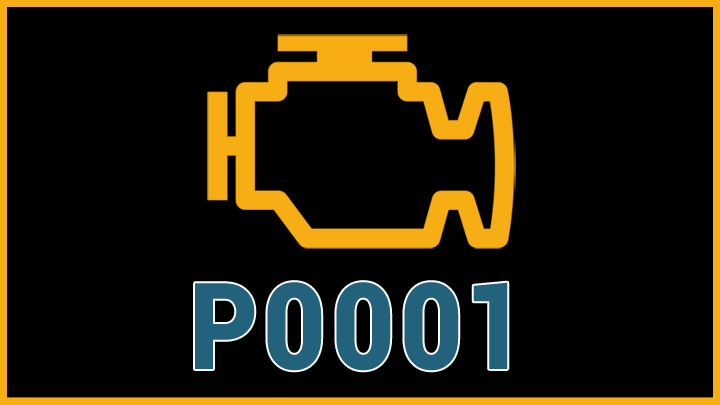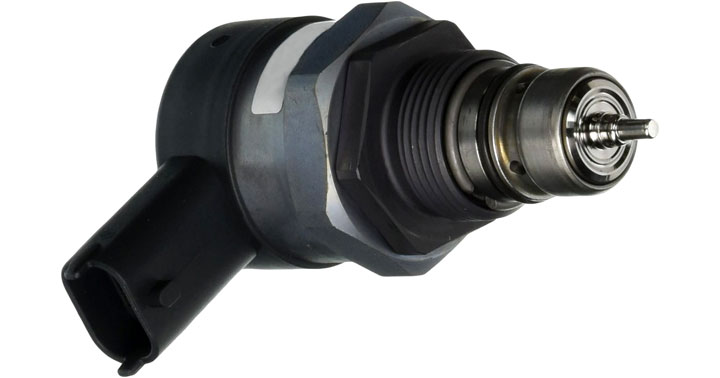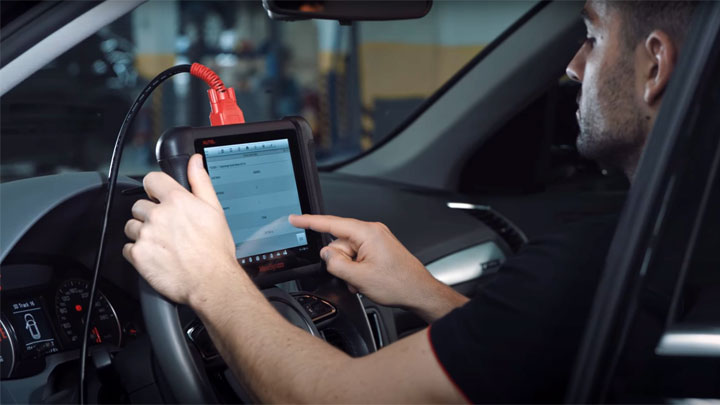P0001 Code (Symptoms, Causes, and How to Fix)
Are you finding yourself confused trying to decipher exactly what it is that your vehicle’s newly logged P0001 fault code is trying to tell you?
This article will decode that code, explain its common causes, how serious it is, and how to fix a code P001 in a step-by-step manner. Read on to save time, money, and frustration.

What Does Code P0001 Mean?
Diagnostic fault code P0001 is indicative of a potential open circuit condition between a vehicle’s PCM/ECM and fuel volume control regulator. A fuel volume control regulator is used to regulate fuel rail pressures, in automotive applications where both high and low pressure fuel pumps are utilized.
To better understand the complexities of this fault, you should first familiarize yourself with the operation of a fuel volume control regulator. The actuation of a fuel volume control valve corresponds to feedback from a fuel rail pressure sensor and a control signal from a vehicle’s PCM/ECM.
Whenever the fuel rail pressure reaches higher than the designated threshold, a vehicle’s fuel volume control regulator opens to a specific degree, allowing more fuel to bleed into the return circuit. Alternatively, if fuel rail pressures drop below the desired threshold, a vehicle’s fuel rail pressure regulator closes, retaining higher pressures within the fuel rail itself.
In the case of diagnostic fault code P0001, a vehicle’s operating software believes that it has lost effective communication with the fuel volume control regulator, thereby indicating an open circuit. As a result, the fuel volume control regulator is unable to respond as it otherwise would under various operating demands, when called to do so by a vehicle’s PCM/ECM.
While diagnostic fault code P0001 is generic in nature and can be registered by vehicles of numerous makes and models, it is most commonly logged among late model diesels. This is due to the prevalence of split pressure fuel systems in modern common rail diesel engines.
Symptoms of Code P0001
Diagnostic fault code P0001 is often accompanied by one or more secondary symptoms, some of which tend to be more obvious in nature than others. Recognizing these symptoms often proves key when attempting to diagnose the issue at hand in a timely manner.
The following are several of the most common symptoms associated with DTC P0001.
- Illuminated check engine light
- Hesitation under load
- Pronounced exhaust smoke
- Reduced power
- Stalling
Causes of Code P0001

Diagnostic fault code P0001 can be caused by one of several underlying issues, each of varying severity. Those who are mindful of these potential causes can often resolve such issues in a timely manner, thereby returning their vehicle to service sooner, rather than later.
The following are several of the most common causes of DTC P0001.
- Failed fuel volume regulator
- Inoperable fuel rail pressure sensor
- Compromised fuel volume regulator wiring
- Damaged Fuel Volume Regulator connector
- Weak high-pressure fuel pump
- Irregular fuel return pressures
- Faulty PCM
Is Code P0001 Serious?
Diagnostic fault code P0001 is generally regarded as being moderately severe in nature. This stems primarily from the sheer number of driveability-related symptoms associated with this particular fault.
DTC P0001 is often associated with reduced engine performance, hesitancy under load, and altered rates of fuel consumption. In the most severe of cases, vehicles have even been known to stall intermittently when suffering from such issues.
Additionally, potential damage to downstream catalysts is always a point of consideration, when deciding whether to continue driving for prolonged periods, with an active fuel system-related DTC.
In gas-burning applications, a vehicle’s catalytic converter can be compromised from excess downstream fuel dosing, while a diesel vehicle’s SCR catalyst and/or DPF often bear the brunt of the abuse in such situations.
In any event, the root cause of a vehicle’s P0001 Diagnostic fault code should be thoroughly diagnosed and repaired at the first available opportunity. Doing so could quite possibly save you from finding yourself stranded along the roadside, while simultaneously minimizing the chance of incurring secondary powertrain damage as well.
If the do-it-yourself approach makes you uneasy, schedule a service appointment at a repair shop you trust.
How to Fix Code P0001

The following steps can be used to assist you in diagnosing your vehicle’s P0001 fault code. As always, be sure to consult all relevant factory-specific service literature for your particular model of vehicle before attempting any such repairs.
#1 – Scan For Additional DTCs
Before beginning the diagnostic process, check for the presence of any additional fault codes with the use of an OBD2 scan tool. Any such active codes that are uncovered should be thoroughly diagnosed before proceeding.
#2 – Consult Freeze Frame Data
With the use of a quality scan tool, assess the freeze frame data (not all tools have this) associated with the stored fault. Attempt to determine if this fault is being logged under any specific conditions.
#3 – Inspect FVCR Wiring
Next, carefully inspect the wiring pigtail to your vehicle’s FVCR (Fuel Volume Control Regulator) valve. Note and repair any signs of damage to this wiring or any related connectors.
#4 – Force-Actuate FVCR
For further diagnosis, you will be required to hook a properly rated fuel pressure gauge to your vehicle’s fuel rail. This gauge will then be monitored while force-actuating the FVCR with the use of a bidirectional scan tool.
Fuel rail pressure readings should respond as expected to all forced actuated inputs.
#5 – Quantify Test Data
If fuel rail pressures did not respond as desired to forced actuation of the FVCR, then an open circuit or faulty FVCR would be suspect, requiring further voltage/ground verification with the use of a multimeter.
If proper pressure fluctuations were noted, then all mechanical pressure readings should be compared to those recorded digitally by the rail pressure sensor.
Large variations between these figures would indicate a faulty fuel rail pressure sensor, an opening in the vehicle’s fuel rail pressure sensor circuit, or a compromised PCM.
- 5 Symptoms of an EVAP Leak (and Repair Cost) - Apr 27, 2024
- P0480 Code (Symptoms, Causes, and How to Fix) - Apr 19, 2024
- Car Temperature Gauge Stopped Working? (Here’s Why) - Apr 15, 2024
